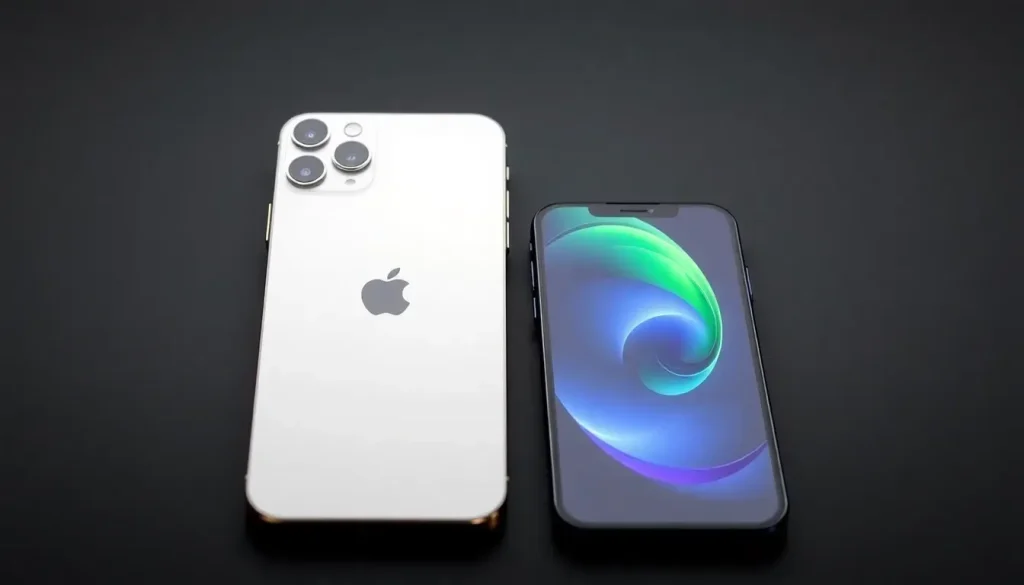iPhone Air compared to iPhone 16 Plus performance review

Apple has made a significant shift in its smartphone lineup by discontinuing the Plus model in favor of the new iPhone Air. This transition sparks an intriguing comparison between the iPhone Air and the iPhone 16 Plus. Dive into the details to discover how these models stack up against each other and which one might be the best fit for your needs.
- Design: Size and Weight Comparison
- Color Options: A Simplified Palette
- Display Features: Advancements and Comparisons
- Performance Enhancements: A19 Chip and RAM
- Battery Life and Charging: Similar Yet Improved
- Camera Capabilities: What’s Different?
- Front Camera Innovations: Center Stage Technology
- New Connectivity Features: N1 Wireless Networking Chip
- Cellular Technology: C1X Modem Introduction
- Pricing and Availability: Understanding the Costs
Design: Size and Weight Comparison
When examining the iPhone Air, the most notable difference lies in its design. The iPhone Air is not only thinner but also noticeably lighter than the iPhone 16 Plus. Here are the specifics:
- Thickness: iPhone Air measures 5.64 mm, while the iPhone 16 Plus is at 7.80 mm.
- Weight: The iPhone Air weighs 165 g (5.82 oz), compared to 199 g (7.03 oz) for the iPhone 16 Plus.
Furthermore, the iPhone Air is shorter and narrower:
- Height: 6.15 in (156.2 mm) vs. 6.33 in (160.9 mm) for the iPhone 16 Plus.
- Width: 2.94 in (74.7 mm) vs. 3.06 in (77.8 mm).
The camera design has also evolved; the camera plateau on the back of the iPhone Air is now full-width, providing a sleek and modern appearance, although it is slightly shorter than that of the iPhone 16 Plus.
Color Options: A Simplified Palette
Apple has introduced a new color palette with the iPhone Air. The colors are simplified compared to the iPhone 16 Plus, allowing for a more refined aesthetic. The iPhone Air is available in:
- Sky Blue
- Light Gold
- Cloud White
- Space Black
In contrast, the iPhone 16 Plus offered a more vibrant selection, which included Ultramarine, Teal, Pink, White, and Black. This shift towards simplicity in color options may appeal to those who favor a minimalist approach.
Display Features: Advancements and Comparisons
The display technology in the iPhone Air is impressive, featuring the same Super Retina XDR Display found in the iPhone 17 Pro. This includes:
- ProMotion Technology: This enables an adaptive refresh rate ranging from 1Hz to 120Hz, enhancing both smoothness and battery efficiency.
- Always-On Display: Users can glance at the time, Widgets, and notifications even when the phone is asleep.
Despite these advancements, the iPhone Air has a slightly smaller display size at 6.55 inches compared to the 6.69 inches of the iPhone 16 Plus. The resolutions are as follows:
- iPhone Air: 2736 × 1260 pixels at 460 ppi.
- iPhone 16 Plus: 2796 × 1290 pixels at 460 ppi.
Additionally, the iPhone Air employs Ceramic Shield 2, offering enhanced durability with:
- 3x better scratch resistance: Thanks to an Apple-designed coating.
- 7-layer anti-reflective coating: To minimize glare and improve visibility outdoors.
With a peak brightness of 3000 nits outdoors—up from 2000 nits in previous models—Apple claims a two-fold improvement in contrast under sunlight.
Performance Enhancements: A19 Chip and RAM
At the heart of the iPhone Air is the powerful A19 Pro chip, which surpasses the performance capabilities of the A18 found in the iPhone 16 Plus. Key features include:
- Neural Accelerators: Enhanced machine learning and AI capabilities, aiming for performance levels comparable to MacBook Pro devices.
- Gaming Performance: An improved GPU that delivers up to 3x peak compute performance over the previous generation.
Additionally, the iPhone Air boasts 12 GB of RAM, which is an increase from the 8 GB available in the iPhone 16 Plus, further supporting its enhanced performance capabilities.
Battery Life and Charging: Similar Yet Improved
The iPhone Air claims to offer battery performance comparable to the iPhone 16 Plus under specific conditions:
- Video Playback (downloaded): Up to 27 hours, matching the iPhone 16 Plus.
- Streamed Video Playback: Up to 22 hours, slightly less than the 24 hours provided by the iPhone 16 Plus.
With the inclusion of a special MagSafe Battery accessory, these figures improve significantly:
- Video Playback (downloaded): Extends to 40 hours.
- Streamed Video Playback: Increases to 35 hours.
Charging has also seen enhancements, with the iPhone Air achieving a 50% charge in just 30 minutes (down from 35 minutes) using a 20W adapter or higher.
Camera Capabilities: What’s Different?
The ultra-thin design of the iPhone Air necessitated some sacrifices, notably the absence of an Ultra Wide camera. However, it retains the 48MP Fusion Wide camera featured in the iPhone 17 lineup. Key specifications include:
- Full-resolution 12MP photos: Achieved at 2x zoom, providing better quality compared to digital zoom.
- Improved Processing: Enhancements in processing lead to better overall photo quality.
- Portrait Mode: Maintained capabilities for stunning portrait photography.
However, users will miss out on the Cinematic Mode for video recording, which allows for professional-quality filming.
Front Camera Innovations: Center Stage Technology
Apple has introduced an innovative Center Stage front camera in the iPhone Air, featuring a square image sensor that facilitates seamless switching between portrait and landscape modes. This camera has an 18MP resolution, ensuring high-quality selfies and video calls.
Center Stage technology automatically adjusts the frame during video calls to keep users in view, a feature that also extends to selfies, allowing for a dynamic adjustment based on the number of people in the frame. Enhanced stabilization features make video recording even more exciting, similar to the Action Mode found in the rear camera.
New Connectivity Features: N1 Wireless Networking Chip
The iPhone Air marks a significant leap in wireless technology with the introduction of Apple's first in-house wireless networking chip, the N1. This chip enhances:
- Overall Wireless Performance: Improving connections for services like Personal Hotspot and AirDrop.
- Bluetooth 6 Support: Upgrading from Bluetooth 5.3, leading to faster connectivity.
- Precision Dual-Frequency GPS: Enhancing location accuracy and reliability.
- NavIC Support: Providing additional GPS functionality in India.
Cellular Technology: C1X Modem Introduction
The iPhone Air is equipped with the new Apple-designed C1X cellular modem, which offers faster and more efficient performance compared to the previous C1 modem used in the iPhone 16 lineup. Key benefits include:
- Speed Improvements: Up to 2x faster than the previous generation.
- Energy Efficiency: Consuming 30% less power compared to Qualcomm modems.
However, the C1X modem does not support mmWave 5G, limiting its capabilities to sub-6GHz speeds.
Pricing and Availability: Understanding the Costs
The iPhone Air starts at $999 for the 256 GB storage variant, the same price point as the iPhone 16 Plus at this storage level. However, the iPhone Air does not offer a 128 GB option, which was priced at $899 for the previous model. Available storage options for the iPhone Air include:
- 256 GB: $999
- 512 GB: $1,199
- 1 TB: $1,399
The iPhone Air is currently available for purchase online and in physical stores, giving users the opportunity to explore this new model firsthand.
My favorite Apple accessories:




Leave a Reply